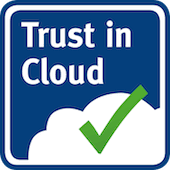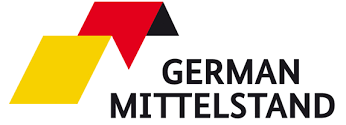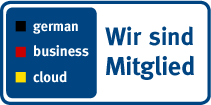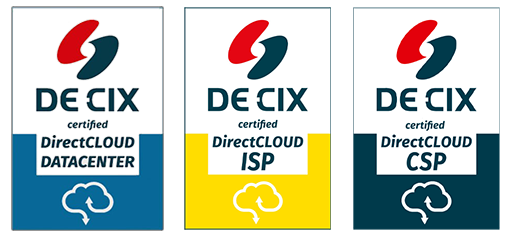How to save on IT infrastructure maintenance with the Remote hands service from a service provider
Contents
The Remote hands (The Smart hands) service is technical maintenance of the client’s IT infrastructure by a service provider or data center specialists. It is advantageous to use this service when there are not enough internal resources and competencies to solve tasks related to IT systems administration.
The Remote hands support can be provided both at the level of hardware maintenance (preventive maintenance, repair, upgrade) and software maintenance (troubleshooting, reinstallation, upgrades, licensing). Along with the Remote hands service, CloudKleyer also offers real-time server monitoring services.
The Remote hands service is in demand both by small companies that do not have the opportunity to employ a technical specialist with the necessary qualifications, as well as large manufacturing enterprises with a developed IT infrastructure. The reasons for giving the hardware to a service provider for maintenance can be very different:
- The technical specialist servicing the IT infrastructure has left the company or urgent highly qualified external assistance is needed.
- Hardware failures started to occur frequently or there are issues with the correct operation of software.
- The load on the infrastructure has increased, causing the system to run slower.
- It became necessary to scale the infrastructure or integrate new hardware or customize complex software.
- A one-time service is needed, such as replacing failed components, assisting with system recovery, relocating and connecting hardware to a new location, or conducting an audit.
- Serious issues with servers or software, but no documentation or maintenance contracts are available.
In most cases, clients turn to a service provider when they do not have the ability to handle difficulties on their own.
The Remote hands service is not only an opportunity to receive prompt assistance from a service provider. Many companies need help with technical and service maintenance of their infrastructure:
- Selection of components and assembly of a new server. Selection of the optimal configuration for business requirements by experienced engineers of the service provider allows you to significantly reduce costs at the stage of planning and launch. A new server can cost tens and sometimes hundreds of thousands of euros, so the issue of saving money is relevant even for large companies.
- Conducting an audit. Analyzing the state of the infrastructure allows you to assess the current state of affairs here and now. The information obtained helps not only to promptly eliminate any issues that may arise, but also to prepare a plan for optimizing, updating or upgrading the infrastructure to a new functional level.
- Maintenance of existing infrastructure. The service provider’s specialists perform preventive maintenance of hardware, troubleshoot problems, update and reinstall software.
- Designing and launching backup systems. Setting up a backup scheme requires high qualification. If the company does not have employees with the necessary competencies, it is better to entrust this work to a service provider. CloudKleyer will not only assist you with backup design, but can also rent out hardware for backup storage.
- Configuring security systems. Engineers of the service provider help to configure data access levels, find and eliminate vulnerabilities in the system, install and configure anti-virus software.
- Network settings. Many companies use service providers when they need to create routing configurations, set up protocols, create VLANs or VPNs, install firewalls, and DDoS protection systems.
Server monitoring
Monitoring is the control of server operation in real time. IT server monitoring reduces the risk of crashes and minimizes the consequences of incidents. Even if a failure occurs, the server room technicians conducting monitoring always know how to act and react as quickly as possible. There are a large number of parameters that can be monitored using system administration tools:
- Availability of the server and any individual applications and services.
- Performance of the operating system and databases.
- Performance of the network hardware, including routers and switches.
- Network response time.
- The amount of RAM used and the amount of data in storage.
- The load on the network and disk drives.
- External impact, such as opening a server rack or changing the temperature in the server room.
- Possible cyber attacks on the infrastructure.
The level of control by the provider and monitoring options are specified in the agreement.
When server monitoring is required
Active monitoring of infrastructure and servers in particular is primarily required by companies that need to ensure uninterrupted operation of hardware and deployed services. If system shutdown for more than 1 hour critically affects business processes, it indicates the need to use monitoring.
IT asset monitoring is also necessary when you need to control the operation of a large number of servers, storage systems and other hardware. The managed IT services monitoring process involves not only direct observation of the system operation, but also setting up triggers for system messages (data storages are full, licenses are about to expire, not enough RAM) with the ability to send notifications to the administrator.
For large companies that have offices, production sites and sales floors connected to a single network, IT infrastructure monitoring allows them to track not only servers, but also other important equipment, for example, peripherals such as: video surveillance cameras, access devices, alarm annunciator, cash registers and ATMs.
Maintenance service on a subscription basis
In addition to infrastructure monitoring and the Remote hands service, CloudKleyer offers its clients hardware maintenance on a subscription basis. This service is a lot like insurance: we replace any failed components, including the most expensive or obsolete ones, free of charge, if the client makes a monthly subscription fee. The amount of fees depends on the type and quantity of the hardware being serviced. You can select one of two possible service options:
- Full day 24/7. Components are replaced within 8 hours from the moment of failure, regardless of the time of day or day of the week. This service option is suitable for companies with highly loaded IT infrastructure, for which even minimal downtime or reduced system performance is critical.
- Next business day. Replacement of failed components takes place during the business day or the next business day. This option is slightly cheaper and is well suited in cases where all infrastructure components are duplicated and the failure of individual components or even an entire server will not affect the operation of the entire system.
Why is it profitable to use the Remote hands service
The Remote hands service has several important benefits:
- Flexible payment terms. In most cases, the Remote hands service is requested by clients when they have to solve a specific task, such as identifying the cause of a malfunction and replacing failed components. For this reason, service providers use an hourly payment system. Usually the cost is €95-100 per hour, but CloudKleyer offers this service at €90 per hour. If not one-time, but permanent assistance is required, a separate agreement with individual conditions is drawn up in each case.
- Comprehensive approach. The service provider not only helps to solve a specific task, but also audits the infrastructure: assesses the quality of operation and performance level of hardware, checks software, identifies risks, and offers the best solution depending on the situation. The information collected helps to optimize resources, plan maintenance and service measures in the short and medium term.
- Ability to use the provider’s resources. CloudKleyer has support contracts with most of the world’s largest vendors: HP, Dell, IBM, Fujitsu, Cisco and Juniper. We offer services for data center relocation, infrastructure migration to the cloud, and are ready to take on software licensing issues.
We offer free consulting services to all our clients. If you need assistance with infrastructure maintenance, please send a request and we will contact you as soon as possible.











